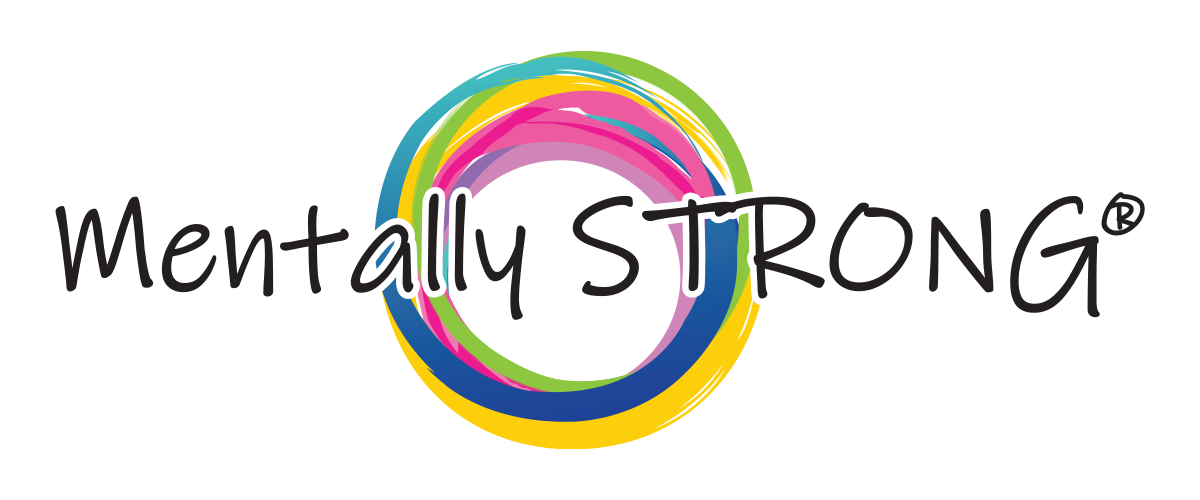Understanding Grief Trauma and Its Impact on the Body
Grief isn’t just something we feel in our minds; it lives in our bodies too. When you go through a loss, your body holds onto that experience, sometimes in ways you may not even notice at first. Trauma can get stored deep in your muscles, in your breath, and even in the way your heart beats. And over time, if that grief isn’t released, it can start to affect your body in ways you might not expect.
When your body begins to let go of grief trauma, it’s a powerful experience. You might notice subtle shifts or even some surprising changes. These signs are your body’s way of telling you it’s healing, and they’re worth paying attention to. It’s okay to take it slow and to honor each step of the process.
Grief Trauma as a Subcortical Experience: Beyond the Thinking Brain
Many of us think of grief as something we can “get over” if we just talk through it or think it away. But grief is so much more than that. It lives in a deeper part of your brain—the subcortical areas, which are below the conscious, thinking part of your mind. These parts of your brain hold onto the intense physical and emotional sensations tied to grief.
That’s why you might find yourself reacting in ways you can’t quite explain. Maybe you feel tense or on edge, even when you aren’t consciously thinking about your loss. That’s because grief trauma sits beyond the reach of logic or words. And to release it, you’ll need to work with that deeper part of your brain—tuning into what your body remembers, even when your mind doesn’t.
The Connection Between Emotional and Physical Health
Your body and emotions are intricately linked. When you carry grief, it doesn’t just stay as a feeling; it becomes something your body holds. This can look like tension in your shoulders, a heaviness in your chest, or even digestive issues. Grief trauma can live in any part of you and show up when you least expect it.
As you begin to heal, you might notice your body softening, a lightness returning, or a feeling of relief. Healing isn’t just about feeling better emotionally; it’s about letting your body process and release those hidden tensions. So as you move through your grief, remember to listen to what your body needs, too. This is all part of honoring your journey and allowing your body and mind to heal together.
The Process of Releasing Grief Trauma from the Body

Letting go of grief stored in the body is a process that takes time and gentle attention. Healing methods like Brainspotting and other somatic therapies don’t just address the mind; they engage the body as well. By getting in touch with how grief lives within us physically, we allow our bodies to release those memories and emotions that words alone can’t touch.
The Role of Brainspotting in Accessing and Releasing Stored Grief Trauma
Brainspotting is one approach that goes beyond talk therapy by helping you tune into where trauma is stored in the body. It works by guiding you to focus on specific spots in your visual field, which helps to access those deeper parts of the brain where grief can hide. Unlike talk therapy, which keeps you in the thinking part of the brain, Brainspotting allows you to work with the subcortical areas. This makes it possible to release trauma and grief that have been stored in ways you may not even consciously remember. It’s about reconnecting with parts of yourself that may have felt numb or lost.
How Different Therapies Facilitate Grief Trauma Release
There are a variety of therapies that can help release grief from the body. Each method engages the body and the brain differently, and it’s all about finding what feels right for you. For example, EMDR (Eye Movement Desensitization and Reprocessing) is often compared to Brainspotting. While EMDR follows a structured protocol, Brainspotting is more flexible and adapts to whatever feels safe and natural for you at the moment.
Other somatic therapies might include mindful movement, breathwork, or body-focused practices that bring you back into connection with yourself. These therapies work by addressing both the mind and body, creating a space where you can gently release the grief you’re holding. Remember, healing is not one-size-fits-all, and it’s okay to explore different methods to find what supports you best on your journey.
Somatic Healing: How the Body Holds and Releases Grief Trauma
Your body is a powerful healer, and it has its own ways of processing and releasing trauma. Somatic healing recognizes that emotions like grief are not just “in your head”—they live in your body, too. When you allow yourself to feel these sensations without judgment, you create space for the grief to release. This can look like deep sighs, muscle relaxation, or even tears. Each sensation is your body’s way of letting go, step by step.
With somatic healing, you’re not forcing yourself to move on; you’re allowing your body to naturally work through the pain at its own pace. As you release these stored emotions, you’re not just lightening your emotional load—you’re giving your body the space it needs to feel safe and whole again.
8 Common Signs Your Body is Releasing Grief Trauma
Releasing grief from your body can show up in different ways. These signs are your body’s way of telling you that it’s healing, that it’s letting go. Remember, healing is not always loud or dramatic—sometimes it’s the quiet shifts that mean the most.
1. Relaxation of Gut Muscles
You might notice that the tension in your stomach begins to ease. Grief can often sit in our gut, making it feel tight or unsettled. As your body starts to release grief, you might feel a sense of softness in your belly, almost like a deep sigh from within. This relaxation is a powerful sign that your body feels safe enough to let go.
2. Changes in Breathing Patterns
Our breath is deeply connected to our emotions. When we’re holding on to grief, our breathing can become shallow or quick, almost like we’re bracing ourselves. As you begin to release, you may find that your breathing slows down naturally. You might even catch yourself taking deeper breaths without thinking about it. This is your body’s way of grounding you, bringing you back into the present moment.
3. Reduced Muscle Tension in the Shoulders, Neck, and Jaw
Grief has a way of creeping into our muscles, especially in areas like the shoulders, neck, and jaw. You may have been carrying this tension for so long that you don’t even notice it anymore. But as you begin to release, you might feel these areas soften. It could be as simple as unclenching your jaw or dropping your shoulders. Each time you feel this release, it’s a reminder that your body is finally letting go of what it’s been holding.
4. Slower Heartbeat and Decreased Blood Pressure
When we’re in a state of grief, our bodies often stay in a heightened state of alert. You might feel like your heart races or that your body is constantly on edge. As you release grief, you may notice that your heartbeat slows down, your body begins to relax, and your blood pressure lowers. This is a gentle sign that your body is moving out of “fight or flight” mode and into a state of rest and healing.
5. Increased Sensitivity and Awareness of Body-Mind Connection
You might start to feel more in tune with your body, noticing sensations that you hadn’t before. This increased awareness is a sign that you’re reconnecting with yourself, that your body and mind are starting to work together again. It’s like waking up to your own presence. This sensitivity is a beautiful reminder that you’re healing, that you’re coming back to yourself.
6. Emotional Releases: Sudden Crying or Feelings of Relief
Sometimes, releasing grief can feel like a sudden wave of emotion—a cry that comes out of nowhere or a feeling of relief that you can’t quite explain. These moments may catch you by surprise, but they are incredibly healing. Allow yourself to feel them fully. Each tear is a step toward letting go, a step toward making room for something new.
7. Improved Sleep and Reduced Nightmares
Grief can keep us up at night, holding our minds hostage with worries or sadness. As you begin to release this grief, you might find that your sleep improves. You may wake up feeling more rested, or notice that your dreams become less intense. This is your body’s way of telling you that it’s finding peace, that it’s no longer carrying the weight of those painful memories.
8. Feeling Safe in Your Own Body Again
Perhaps the most profound sign of all is a feeling of safety—a sense that you can breathe deeply, relax, and feel at home in your body. This feeling might come and go, but each time it does, it’s a gift. It’s your body’s way of showing you that it trusts itself to heal, that it trusts you to take care of it. This safety is a reminder that you are strong, that you are capable of healing, and that you’re on your way to feeling whole again.
The Role of Professional Support in Grief Trauma Recovery

While your body is incredibly resilient and capable of healing on its own, sometimes you need a little extra support. Trauma from grief can be heavy, and it’s okay to seek help. Working with a professional who understands grief can provide you with the tools and space to process and release what’s been stored in your body. Here’s how professional support can make a difference.
The Importance of Choosing the Right Therapeutic Approach
Not all therapy is the same, and you need to find the right approach that works for you to start your healing journey. For many, traditional talk therapy offers a space to explore thoughts and feelings. But when it comes to grief trauma, approaches that go beyond words—like somatic therapy or brainspotting—can be incredibly effective. These therapies engage the body directly, helping to release trauma on a deeper, physical level. Take your time to explore and find the approach that resonates with you.
Combining Brainspotting with Other Modalities for Effective Healing
Brainspotting is a powerful tool for accessing and releasing grief trauma, but it doesn’t have to be the only tool in your toolkit. Many people find that combining brainspotting with other therapies, like EMDR or somatic experiencing, can enhance their healing. Each modality works a little differently, and together, they can create a holistic approach that addresses both the mind and body. Think of it as giving your body multiple ways to let go, each one reinforcing the other.
How Therapy Helps in Integrating and Moving Past Grief Trauma
One of the most profound aspects of therapy is its ability to help you integrate what you’ve been through. Grief trauma can often feel fragmented, like parts of you are stuck in different places. Therapy helps bring those pieces together, so you can feel more whole. By working with a professional, you’ll learn to reconnect with parts of yourself that may have been hidden away, giving you the strength to move forward with a sense of peace and resilience.
Finding a Grief Trauma-Informed Therapist: What to Look For
Look for a therapist who has experience with grief. A grief trauma-informed therapist will have a compassionate approach and will understand the unique ways that grief affects the body and mind. They should also make you feel safe, respected, and heard—your comfort with them will really shape what your healing process looks like
Practical Steps to Facilitate Grief Trauma Release
Healing the trauma that comes from grief takes time and self-compassion. While professional support can guide you, there are also practical steps you can take to support your healing journey. These steps are simple but powerful, helping you nurture both your mind and body as they release stored grief trauma. Remember, healing is a deeply personal journey—go at your own pace, and don’t be afraid to adjust based on what feels right for you.
Practising Self-Compassion and Mindfulness
The journey through grief can bring up feelings of guilt, self-blame, or sadness. Practicing self-compassion is about allowing yourself to feel without judgment. When you notice self-critical thoughts creeping in, gently remind yourself that you’re doing the best you can. You deserve kindness and grace, especially from yourself. Incorporating mindfulness practices, like gentle breathing exercises or mindful observation, can help you stay present and grounded, even during difficult moments. By being present with your emotions, you allow them the space they need to process and eventually release.
Healthy Coping Strategies for Managing Grief Trauma Responses
Everyone has their own way of coping, but at the heart of coping is the need to expel that trauma from your body, and finding strategies to expel trauma will help support you in your healing journey. Physical activities like yoga or walking can be especially helpful, as they encourage the release of tension stored in the body. Journaling can also provide an outlet for thoughts and emotions you might not be ready to speak aloud. If you find yourself overwhelmed, try breaking things down into small, manageable steps. It’s okay to take things one day—or even one moment—at a time.
Incorporating Movement and Breathwork in Your Daily Routine
Movement is a powerful way to help the body release grief trauma. Gentle exercises, such as stretching, yoga, or tai chi, can help you tune into your body and release stored tension. Breathwork is another essential tool, as it activates the parasympathetic nervous system, which calms the body and mind. Try setting aside just a few minutes each day to focus on deep, steady breaths. When you breathe with intention, you help create a sense of safety and relaxation within, which allows your body to let go of what it no longer needs to hold onto.
Building a Support System: Family, Friends, and Professional Help

Healing from grief trauma can sometimes feel isolating, but you don’t have to go through it alone. Connecting with supportive friends, family, or a community can make a big difference. Surround yourself with people who are willing to listen without judgment and who offer comfort in a way that feels nurturing to you. Let them know how they can best support you, whether that’s simply sitting with you in silence or joining you for a walk outside. When we allow ourselves to lean on others, we’re reminded that we don’t have to carry the weight of our grief and trauma alone.
Releasing Grief Trauma and the Path Forward
There is no “right” way to heal—only what feels healing for you. Releasing grief trauma is about honoring your feelings and allowing yourself to process them at your own pace. Take each day as it comes, be gentle with yourself, and remember that healing is a journey, not a destination.
If you’re ready to explore your grief on a deeper level, consider connecting with others who understand what you’re going through. Having a community can provide insight, comfort, and the reminder that you’re not alone in this. I encourage you to visit this page, where we offer resources to help you navigate these difficult emotions.And if everything right now feels too painful and confusing, let’s find a way out of this pain together. Reach out to me if you’re seeking one-on-one support that’s tailored to your unique experience. I’m here to walk alongside you with empathy, understanding, and the tools to help you regain your strength. You don’t have to do this alone—let’s take this journey together.

